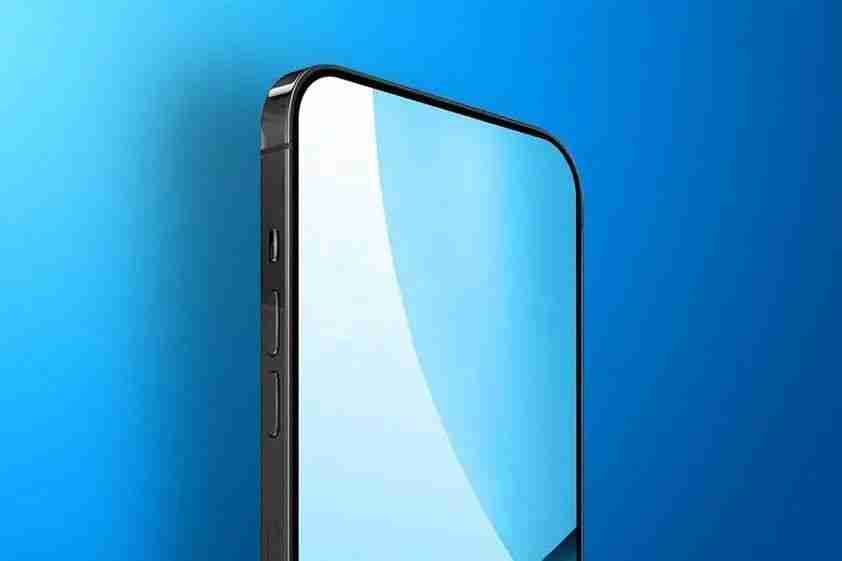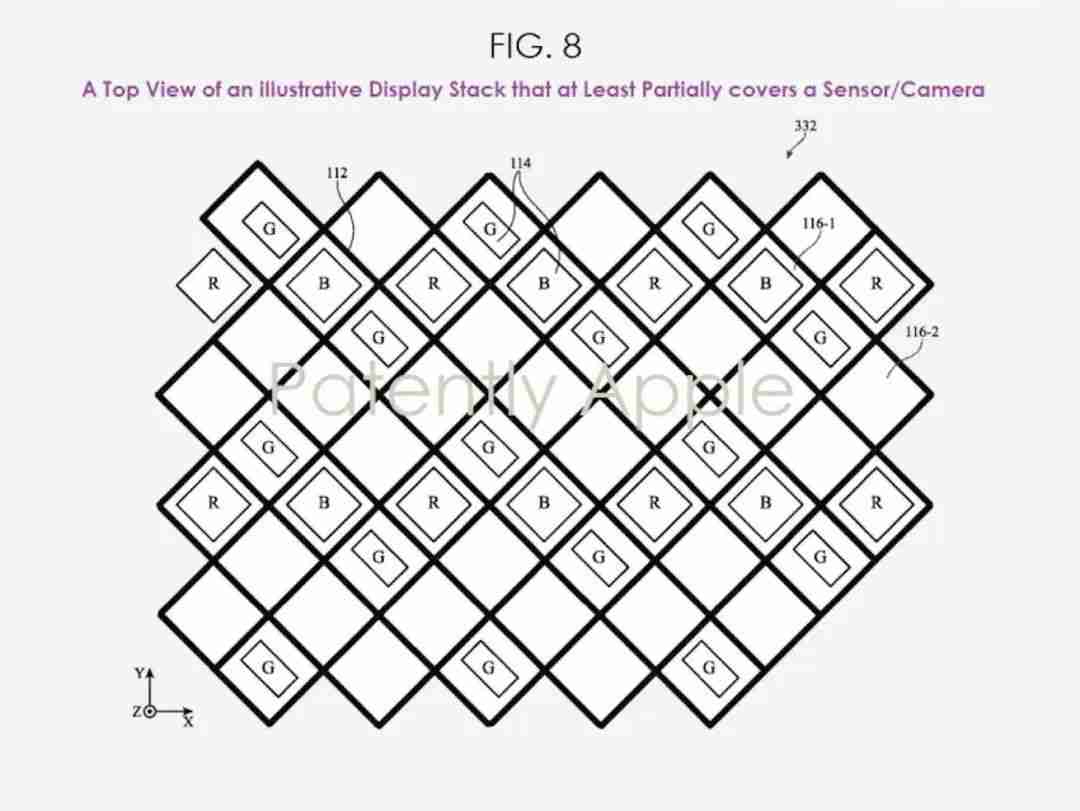Is a truly full-screen iPhone really coming?

The ideal
Perfectionism
After every new generation of Apple is released, there are always two kinds of heated discussions. One is the sharp comments on the current generation of products, and the other is the bold prediction of the next three generations of iPhones.
In the six months since iPhone 15 was launched, the under-screen camera has become the focus of many news media.
Some time ago, Macrumor broke the news that Apple’s suppliers in South Korea have begun the research and development of under-screen cameras for smartphones. On the other hand, some netizens immediately pointed out that there were similar rumors five years ago.

We don’t know when we will see the iPhone as shown in the picture, but until the real machine is launched, this debate will continue.
Compared to Android, which is getting smaller and smaller in terms of front-facing cameras, and even rushing to try "true full screen", Apple is like an audience sitting on the sidelines, in the same time and space, but not participating in the game, staying aloof and sticking to the top of the screen That dark spot.
To understand why Apple has not launched the much-anticipated under-screen lens, we must first clarify a question:
Why is the front-facing module so important to Apple?
The more furniture, the bigger the house will be
There is actually a secret hidden in Apple’s bangs.

The front module includes 8 sensing components including "infrared lens", "flood sensor element", "speaker", etc. Looking at it again from this perspective, it seems that the existence of Qi Liuhai can also be understood.
The infrared lens, dot projector and front camera are the fundamental reasons why Apple insists on retaining large modules.

Although the entire iPhone 15 series uses a shorter "Smart Island" and many sensors have been rearranged and designed, these three brothers still stand in the center of the "island".
The iPhone has always had its own unique understanding of photography. The evaluation website DXOMARK ranked the iPhone 15 Pro Max at the top of the list in terms of "selfie effect" in the past two years. Even last year's 14 can still rank among the new phones in 2023. Here, we achieved a tie for second place.

Pictures from: DXOMARK
The iPhone’s paper data has never been the best, but Apple’s shadow is indispensable in all horizontal comparisons of photography evaluations; its photo style is not the most pleasing either. That, but the natural imaging effect is quite bright on the major lists.
In this era of increasingly frequent online interactions, selfie live broadcasts, video calls, and online meetings all require the participation of the front lens, so the iPhone has placed the weight of front-facing photography at a high level.
The twin brothers of "infrared lens" and "dot matrix projector" merge into the gatekeeper of Apple's ecosystem - Face ID.

It’s common to hear Apple users complain about iPhone battery life and signal, but it’s rare to hear rumors about Apple’s poor security. This is due to Apple’s deep efforts in security verification.
Face ID joined the Apple ecosystem as early as 2017. At the same time, the iPhone also completely abandoned the Touch ID that it led.
The security of face recognition is incomparable to fingerprint unlocking. The unlocking process of "3D Structured Light Dual Camera" is a bit awkward to explain. We will only select the key parts and briefly explain it.
The "payment level" face unlocking is the biggest compliment to Face ID. Even the treasury can rely on the technology provided. Of course, there are some insurmountable thresholds, and the "dot matrix projector" is one of the big contributors.

The invisible IR Dot is projected onto the human face through the lens, forming a three-dimensional model with 30,000 dot matrix groups on the face, and then the infrared lens is used to scan the virtual mask and match it with the dot matrix information in the mobile phone , to confirm whether the unlocker is the owner.
Facial information is actually 20 times more secure than fingerprint solutions. The probability of unlocking the phone with the same fingerprint is one in 50,000, and with Face ID, this probability shrinks to one in a million.

After years of upgrades in facial recognition, users can use it when wearing masks, glasses, and hats, but photos with fake faces or even 1:1 face models cannot be unlocked.
In order to prevent the owner from being forcibly unlocked by others holding the phone while sleeping, Face ID also adds "attention detection" technology. Only when the owner's attention falls on the phone screen, the iPhone Only then will it be recognized as an unlocking command, and the above unlocking process can be carried out.

Features such as beautiful appearance and full screen are all items that can be compromised in the face of "security" and "image".
Apple’s stubbornness will make bangs and pills exist until it encounters “perfect” under-screen technology.
However, several patents that have been revealed on Apple’s patent website seem to have given some signs of the true full screen that is far away.
Three axes to block the gap
ZTE, Xiaomi, OPPO, Samsung, etc. have already launched under-screen cameras. Although they have different names for this technology, However, the underlying logic of realizing the "disappearing lens technique" is very similar.
Since the OLED luminescent material is opaque, if you want to be able to see the screen and have the camera see us under the screen, you need to increase the screen in the area of the front lens. Light transmittance, whether it is to make the gaps between pixels larger or to remove some pixels, the final effect is that light can smoothly pass through the gaps and enter the lens.

Apple also uses the same principle to design under-screen lenses, but compared to previous manufacturers, iPhone under-screen lenses have two native problems to face. :
An iPhone equipped with FaceID has a larger front module that needs to be hidden
A larger module requires a larger light-transmitting area
#🎜 🎜#



 However, planar optical waveguides seem to have solved this problem. This technology uses planar optical waveguides on the phone's display to guide radiation across the display surface without interfering with display functionality.
However, planar optical waveguides seem to have solved this problem. This technology uses planar optical waveguides on the phone's display to guide radiation across the display surface without interfering with display functionality.

So, this iPhone 16 rendering is not unreasonable.
But to be truly comprehensive, the lens must be a topic that cannot be avoided. After all, the resolution above the module is still different from the main screen. Even the Red Magic 9 Pro will still display high resolution in light colors. The bright interface sees the "screen window-like" area under the screen.
And Apple’s third ax is specifically designed for this.

First of all, through the special "W" arrangement of pixels, the light transmittance is increased, the diffraction phenomenon is reduced, and "halos" and "halos" are avoided in selfies A sense of mist."
Then, components in this area (such as touch sensor metal) can be moved toward or away from their adjacent pixels in different usage scenarios, thereby reducing the "pixel removal area" and The display difference between "full pixel density areas".
Judging from the description of the patent document, Apple has achieved variable resolution in the physical sense.
While flipping through the patent documents, I also discovered a "caution" from Apple.

The diagram does not give the specific location of the area under the screen, but lists possible locations in sequence. This smoke bomb is no less than every year before the release of a new iPhone, the entire Internet starts a carnival of speculation about the shape of the rear module.

In the past two years, major manufacturers seem to have slowed down their exploration of full screens.
On the one hand, after years of attempts, fantastic ideas such as front and rear double-sided screens, flip lenses, and sliding screens have all become fleeting historical products. The ideas are fresh but the market is not buying it. , under the current technical level, the ideal mobile phone with "weight and portability", "high-definition pixels" and "complete screen" can only satisfy two of them.

The item that is discarded in this impossible triangle also forms the characteristics of different brands and different series.
On the other hand, the incomplete screen is not entirely a shortcoming. Returning to the top of the screen, I suddenly discovered that the existence of punch holes, bangs or water drops not only allows the front module to have space, but also provides a natural habitat for the information bar.

On the day when off-screen solutions become popular, where will the status bar information go? What tricks will manufacturers come up with regarding the removal and retention of these icons? It’s quite worth looking forward to.
However, people’s pursuit of perfect screens has caused this protracted “space tug-of-war” to continue. What will the mobile phone screens of the future look like? In fact, we already have the answer.
Former Apple chief designer Jony Ive believes that the "infinity pool" will be a form of mobile phone screens in the future. From Samsung Galaxy Note Edge to Huawei Mate 30 pro, this concept has been inadvertently used throughout. , but the one that can truly achieve visual boundlessness is the Xiaomi Mix α placed in the showcase. However, this machine is still too far away from mass production, or from us.

These patent documents also give us a little hope of a "full-screen iPhone", but Apple, which has always been willing to be lackluster, in There were a few slow steps on the way to finding the perfect screen.
Just like Steve Jobs who would rather have an empty home than make do with furniture he didn’t like, the design of the iPhone seems to have always maintained this concept, always being unique and always one step behind. , and of course it will attract the attention of the world when making changes.
More importantly, when iPhones in recent years are put together, it is not difficult to find that they have quietly improved.

The above is the detailed content of Is a truly full-screen iPhone really coming?. For more information, please follow other related articles on the PHP Chinese website!

Hot AI Tools

Undresser.AI Undress
AI-powered app for creating realistic nude photos

AI Clothes Remover
Online AI tool for removing clothes from photos.

Undress AI Tool
Undress images for free

Clothoff.io
AI clothes remover

Video Face Swap
Swap faces in any video effortlessly with our completely free AI face swap tool!

Hot Article

Hot Tools

Notepad++7.3.1
Easy-to-use and free code editor

SublimeText3 Chinese version
Chinese version, very easy to use

Zend Studio 13.0.1
Powerful PHP integrated development environment

Dreamweaver CS6
Visual web development tools

SublimeText3 Mac version
God-level code editing software (SublimeText3)

Hot Topics
 1664
1664
 14
14
 1421
1421
 52
52
 1315
1315
 25
25
 1266
1266
 29
29
 1239
1239
 24
24


